There are a multitude of different types of witches out there in the world, and I’d like to give you an introduction to some of them in Witch symbols. To begin with, I think it’s important to first define what a witch is. A witch is simply someone who practices witchcraft. Witchcraft is something you do, like ritual or spellwork, and it’s not necessarily a belief system in and of itself. So, you don’t need to follow any specific religion to call yourself a witch or practice witchcraft. There are, however, many witches who use witchcraft as part of their religious practice. So it’s up to you to determine which path best fits your own spiritual journey.
Different Types of Witchcraft
Certainly, there are various types of witchcraft, each with its own distinct practices, beliefs, and traditions. Here are some of the most well-known types of witchcraft:
Gardnerian Witchcraft
Gardnerian Witchcraft, or Gardnerian Wicca, is a specific tradition of modern witchcraft founded by Gerald Gardner. It is initiatory and conducted in covens. Key features include a duotheistic belief in a God and Goddess, the use of a Book of Shadows (a sacred text), and an emphasis on secrecy and skyclad (nude) rituals. Gardnerian Witchcraft has a structured ritual format and is just one of many Wiccan traditions.
Gardnerian Wicca is a hierarchical system that consists of a high priest and priestess, as well as various initiations. So, one is not a Gardnerian Witch until they have learned their specific traditions and have gone through proper initiation.
Gardnerian Witchcraft is just one of many diffrent types of witches and forms of modern witchcraft. Since its inception, other Wiccan and witchcraft traditions have emerged, each with its own unique practices, beliefs, and rituals. Some people find Gardnerian Witchcraft appealing due to its structured and formalized nature, while others are drawn to more eclectic or solitary paths within the broader world of modern witchcraft.
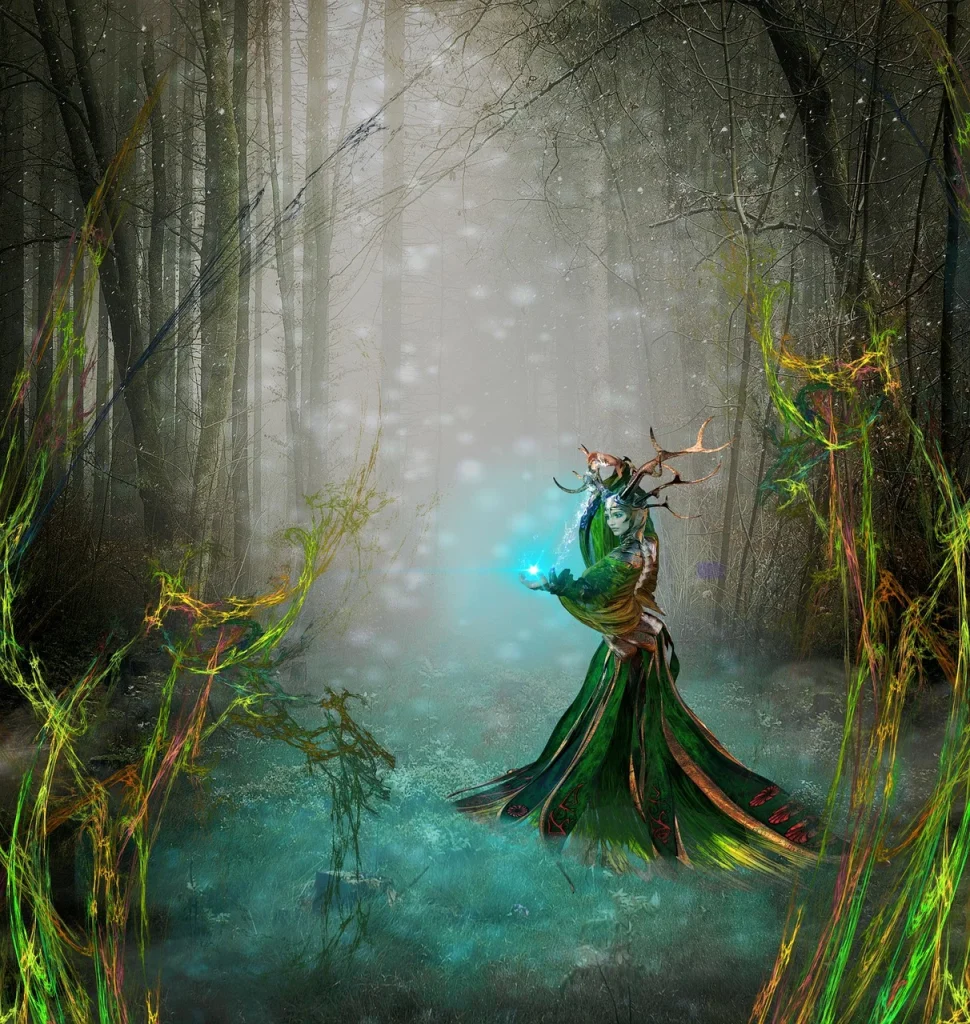

Alexandrian Witchcraft
Certainly, Alexandrian Witchcraft, also known as Alexandrian Wicca, is another modern tradition of witchcraft closely related to Gardnerian Witchcraft. It was founded by Alex Sanders and his wife, Maxine Sanders, in the 1960s. Alexandrian Witchcraft shares many similarities with Gardnerian Witchcraft, but it also has its own unique characteristics.
Alexandrian Witches generally follow a similar duotheistic belief system as Gardnerians, honoring a God and Goddess. These deities may be seen as representations of masculine and feminine forces in the universe.
Rituals in Alexandrian Witchcraft are typically conducted in a coven setting and follow a structured format. They often include the use of ceremonial tools, such as athames, wands, and chalices, as well as the observance of the Wheel of the Year, which includes Sabbats and Esbats.
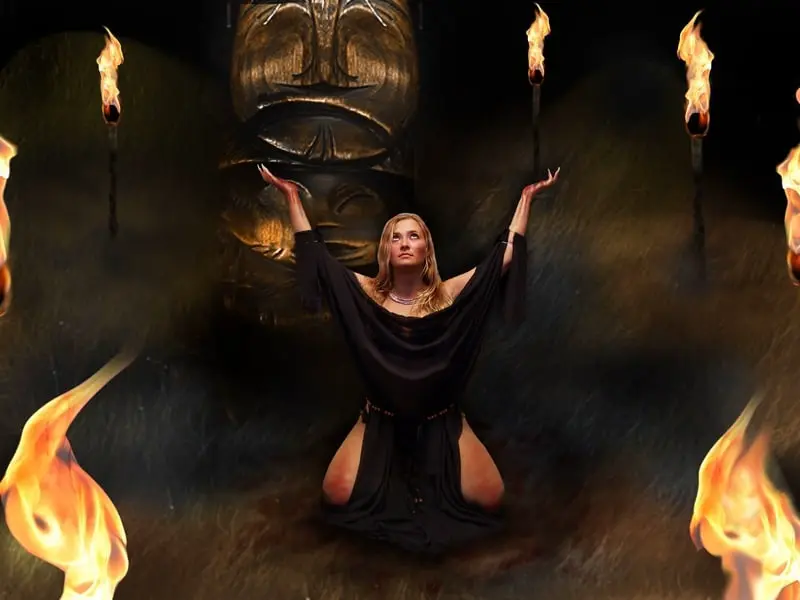

Shamanism
Shamanism is a worldwide practice that involves journeying into the spirit world to gain knowledge, healing, and guidance. Shamans often work as intermediaries between the physical and spiritual realms.
The ritualized activities, trance states, preternatural abilities, and supposed interaction with spiritual entities (demons, ghosts, etc.) that characterize shamanism constitute a remarkably pervasive aspect of magic in many cultures from earliest antiquity even to the present. Whether they are called shamans, seers, medicine men, witch doctors, or occasionally witches, people engaged in some type of shamanistic practice have been revered and celebrated, feared, or condemned in many societies.
In addition, scholars have argued that remnants or residues of shamanistic practices underlie numerous magical rites in many other societies. Perhaps most famously, Carlo Ginzburg identified shamanistic elements in the rites of the so-called benandanti (well-farers) of early modern Friuli. Although the benandanti claimed that they battled witches in a trance state to ensure the fertility of crops, investigating inquisitors eventually became convinced that the benandanti were themselves witches.


Solitary Witch
A Solitary Witch is one who does not belong to a coven. From the earliest times, there have been Witches who worked alone. Since the raison d’être of Witchcraft is to worship and relate to the gods, there is no reason at all why a person should not do so alone.
To become a Witch, one must go through an initiation, which is essentially a dedication of oneself to the gods. This can be done just as well by the Solitary as by the coven Witch. A Solitary will perform a ritual dedicating himself or herself to the gods, stating a desire to worship them from that point onward. Such a self-initiation is as valid as any coven initiation.
If a Solitary Witch desires to do magic which is not required, he or she may do so on an individual basis. The Wiccan Rede “An it harm none, do what thou wilt” applies equally to the solitary. A Solitary Witch can incorporate various different paths based on their interests and may or may not use witchcraft as part of a wider spiritual path or religion.
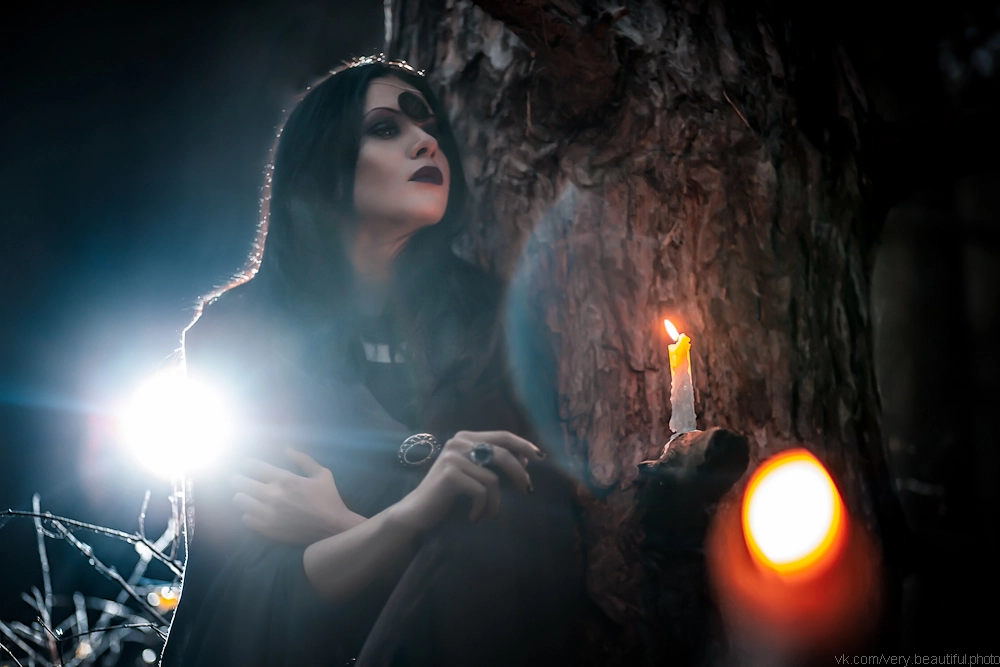

Eclectic Witch
An Eclectic Witch is one of the most popular types of Witchcraft, especially for beginners. Modern Eclectic Witches rarely adhere to specific rules and instead blend various traditions, practices, and beliefs into their spiritual practice.
Eclectic Witches may incorporate elements from various sources, such as Wicca, folk magic, or other spiritual paths, depending on their interests. This makes Eclectic Witchcraft a highly flexible and inclusive spiritual practice appealing to people from a wide range of backgrounds and beliefs. Here is a guide that includes everything a modern beginner would want to know!
The word eclectic comes from a Greek verb meaning to select. It was initially meant to describe philosophers who did not follow a specific academic path or field of study.
One of the most significant characteristics of Eclectic Witchcraft is the emphasis on individuality and creativity. Unlike more ceremonial forms of Witchcraft, which often follow strict rules, Eclectic Witchcraft encourages experimentation and personal exploration.
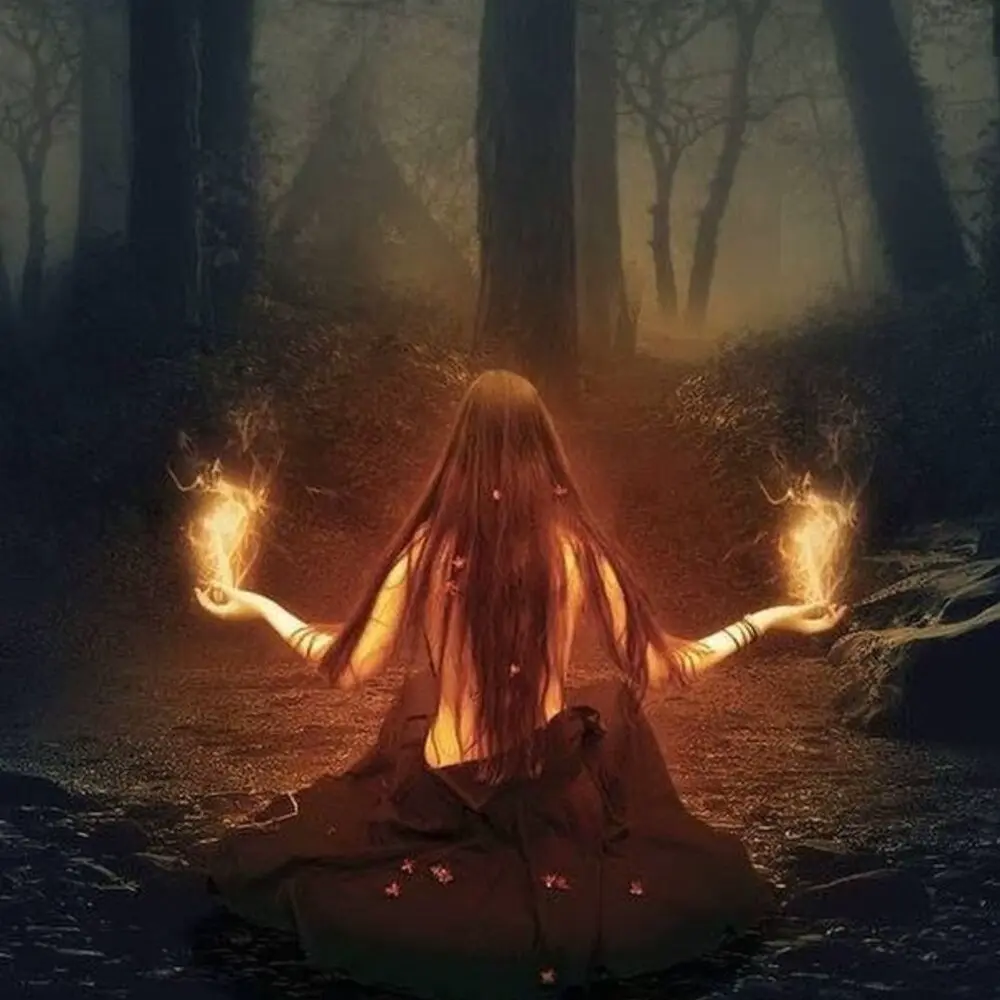

Traditional Witchcraft
Traditional Witchcraft is a term that encompasses various forms of witchcraft and folk magic that are rooted in pre-modern, indigenous, or historical practices. Unlike some modern Wiccan traditions, which were developed in the 20th century, Traditional Witchcraft often seeks to preserve and revive older, folkloric, and regional witchcraft traditions. It is important to note that Traditional Witchcraft can vary widely based on the specific tradition or region it draws from.
Many Traditional Witches honor and work with their ancestors, believing that they hold wisdom and can provide guidance and protection. Ancestor veneration is a common element in their practice. often emphasizes practical magic and cunning folk traditions, which include spellwork, herbology, divination, and folk remedies. These are used for both magical and everyday purposes.
Traditional Witchcraft can encompass a wide range of practices and beliefs as it draws from diverse historical and cultural sources. It is a highly individualistic and eclectic path, often passed down through oral tradition or family lines, making it unique to each practitioner and their specific lineage.
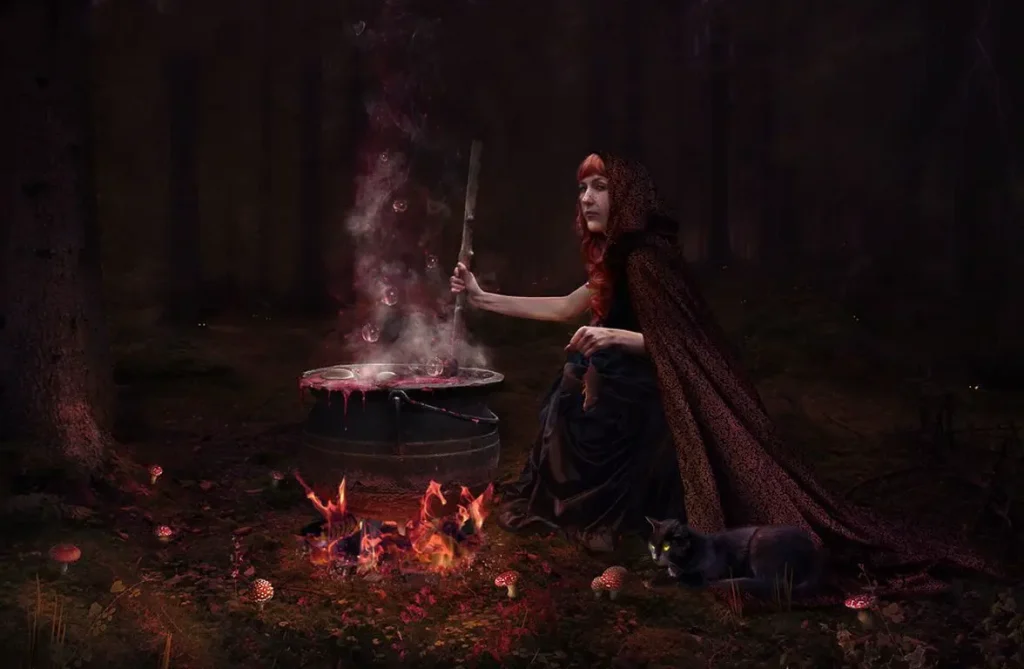

Hereditary Witch
A family tradition is an eclectic mix of practices, pantheons, cultures, family, and ancestry. This type of tradition is constantly forming and forging and is at times referred to as a family tradition.
A Hereditary Witch is someone who claims to have inherited their knowledge, skills, and practices of witchcraft and magic from their family or ancestors. This concept is rooted in the idea that witchcraft abilities and traditions are passed down through generations within a particular family or lineage. Hereditary Witches are often associated with having a family history of magical practices and are believed to possess a deep connection to the traditions and beliefs of their ancestors.
Due to the fact that there is no documentation to determine whether or not a person is hereditary in their witchcraft, it becomes hard to prove or disapprove of it. There are also many variations regarding hereditary witchcraft which has developed and spread throughout the world. There is also the fact that hereditary witchcraft is not only passed to biological relations. There are reasons why a witch would choose to pass on their knowledge to a non-family member.
There are plenty of witches who practice hereditary witch yet they were not born into a particular family. This means that there are two different types of hereditary magic: those not born of and those born of the lineage of the witch. This makes it hard to determine whether whatever the witch is practicing is in the family lineage or was inherited from a non-family. This controversy makes it tough for hereditary practitioners.


Hedge Witch
A Hedge Witch is a solitary practitioner of the herbal arts, both, medicinal and spiritual. She is the person you call when you develop a rash or get a toothache and the doctor or dentist is unavailable. She is the person you consult when strange things go bump in the night, or you are certain that someone just gave you the evil eye.
Her cupboard contains the remedy for what ails you—physical and spiritual.
A Hedge Witch does not belong to a coven. She does not follow the tenets of any sect or organized religion. Her craft is her own – usually handed down to her by family and honed by her own experience and research.
You will not find two Hedge Witches that are alike. Each follows her own path. The common thread that puts us under the heading of Hedge Witch is our herbal remedies and our solitary spiritual practices
The name Hedge Witch, comes from days ago, when villages were separated by forests. The edge of a village where the forest began was called the hedge. In most villages, there was an herbal practitioner who lived in the forest or near the edge of the forest. This was the person the villagers appealed to when there was no doctor or the doctor couldn’t cure them. The practitioner who lived by the hedge and practiced herbal arts was called a Hedge Witch.
Today, a Hedge Witch may or may not live near the forest, but you likely will find her there at one time or another. Most Hedge Witches have a reverence for nature. They know the medicinal and spiritual properties of everything that grows, and they understand nature’s balance. A wise Hedge Witch enlists nature to deal with natural problems. She harvests more weeds than she pulls. She invites wasps, spiders, and other predators to kill unwanted bugs. She uses plants and animals to divert bunnies from the vegetable garden.


But the most definitive characteristic of a Hedge Witch is that she has a remedy for everything under the sun, and much of it was prepared by the light of the moon.
kitchen witch
A kitchen witch enjoys making their home and surroundings a sacred space. They often like to incorporate witchcraft into their cooking and put their energy and focus into the food and meals they create. They care deeply about the ingredients and may have their own herb and vegetable garden.
Kitchen witches may perform spells, rituals, and charms using witch herbs, spices, kitchen tools, and other common household items to create positive energy, protection, and prosperity within their homes.The focus of kitchen witchcraft is typically on nurturing and maintaining the well-being of the family and household, as well as fostering a harmonious and peaceful atmosphere.
Kitchen witches may place protective charms or wards in the kitchen to guard against negative energy or ill wishes. and Some kitchen witches use kitchen tools like a cauldron, a mortar and pestle, or a set of divination tools for reading and scrying. Seasonal and lunar celebrations: Kitchen witches often celebrate the cycles of the moon and seasons with rituals and spells that are closely related to nature and the changing of the year.


Green witch
Green witches or nature witches are extremely nature-based. They are likely to be in-tune with the seasons and often use natural materials to create their own magical tools. They most likely try to perform all their spellwork and rituals outside in nature when possible. She relies on plants, flowers, and herbs. She calls to nature for guidance and respects every living being.They are the true definition of nature-relatedness.
The Green Witch understands that the earth incorporates the planet and all living things upon it, including animals, plants, and people. She understands that humanity impacts the natural world not only by how we treat it but also by the feelings and energies of individuals.
It’s likely the spiritual ancestresses of modern green witches who chose to live apart from the center of community life. Though they may have made their homes on the edge of town, they would’ve preferred to make their homes in nature. It is harder to hear what Earth has to say when you are surrounded by the hustle and bustle of busy life
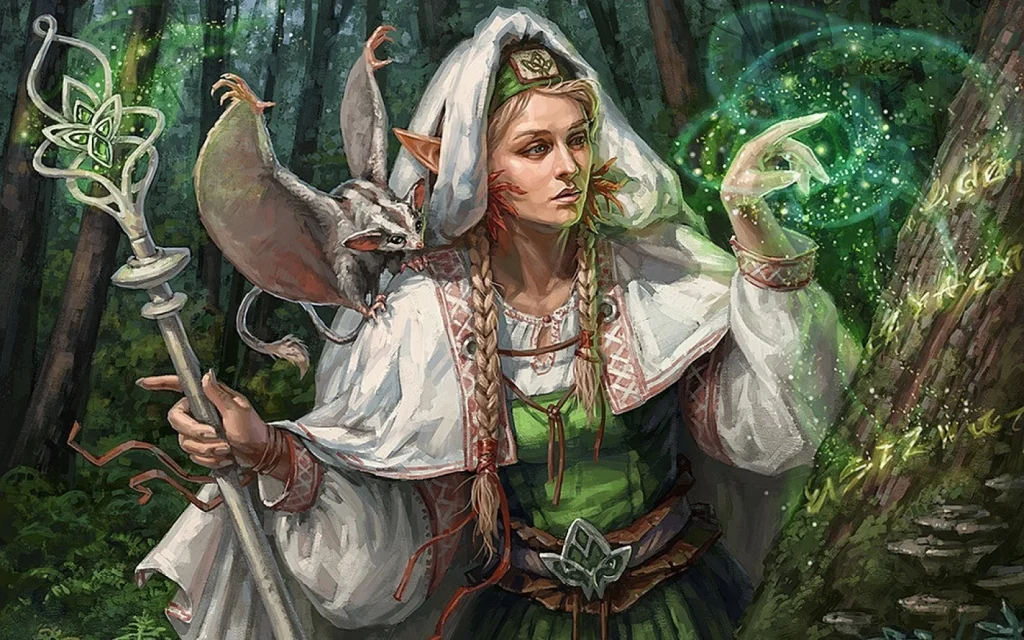

Cosmic Witchcraft
This is commonly understood to mean that celestial movements and energies affect terrestrial events. Scientifically, we can see this in the tides and seasons, but it also applies to many other things, including moods, behavior, and magical workings such as spell casting.
Most witches already practice some aspects of cosmic witchcraft. Many witches follow moon cycles. Often, witches use astrological energies to enhance their spellcasting. Becoming a cosmic witch (sometimes called a star witch) means that you are intentionally devoting time to work with the energies of the celestial bodies and the deities associated with them to increase your knowledge in this area.
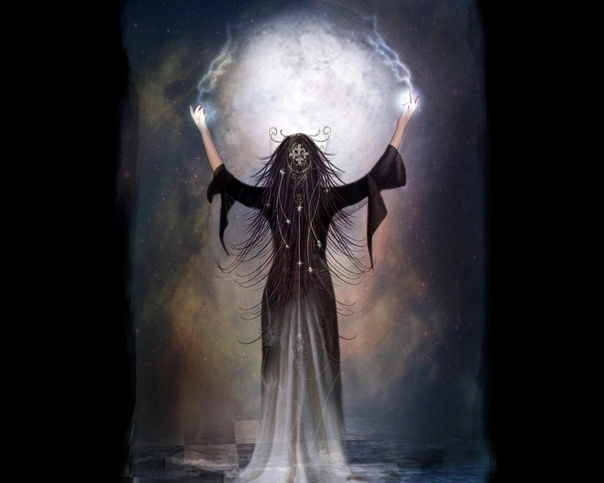

Sea Witch
Sea witches are a fascinating and mystical archetype often associated with folklore, mythology, and modern witchcraft. These witches are believed to have a deep connection to the sea and its energies, and they draw upon the power of the ocean and its elements in their magical practices. Here are some key aspects associated with sea witches:
Sea witches may use various forms of divination, such as scrying using a bowl of water, to gain insights and guidance from the spirits of the sea. They believe that the reflective nature of water can reveal hidden truths and messages.They often have a deep appreciation for and connection to sea creatures like dolphins, whales, and fish. These animals are seen as messengers and sources of wisdom.
Some sea witches work with the energy of storms and tempests. They may harness the power of the ocean’s fury in their magical practices, often invoking or placating sea deities and spirits to navigate these turbulent waters.


Santeria Witchcraft
Santería witchcraft , also known as “Santería magic” in some contexts, is a form of magical practice associated with the Afro-Caribbean religion of Santería. Santería magic draws on the beliefs and rituals of Santería but focuses on harnessing spiritual forces and natural elements to achieve specific goals, such as protection, healing, love, and prosperity.
Santería witch often involves working with the orishas, which are deities or spirits in the Santería tradition. Each orisha is associated with specific qualities and attributes. Practitioners may invoke or petition these orishas to help with their magical workings. The Rituals and Offerings of Santería witch frequently includes rituals and offerings to honor and gain favor from the orishas. These rituals can involve lighting candles, using herbs, making offerings of food or other items, and performing dances or chants.


These are just a few examples of the many types of witchcraft and magical traditions that exist. Each type of witchcraft has its own unique beliefs, practices, and cultural influences, making the world of witchcraft a rich and diverse tapestry of spiritual and magical traditions.

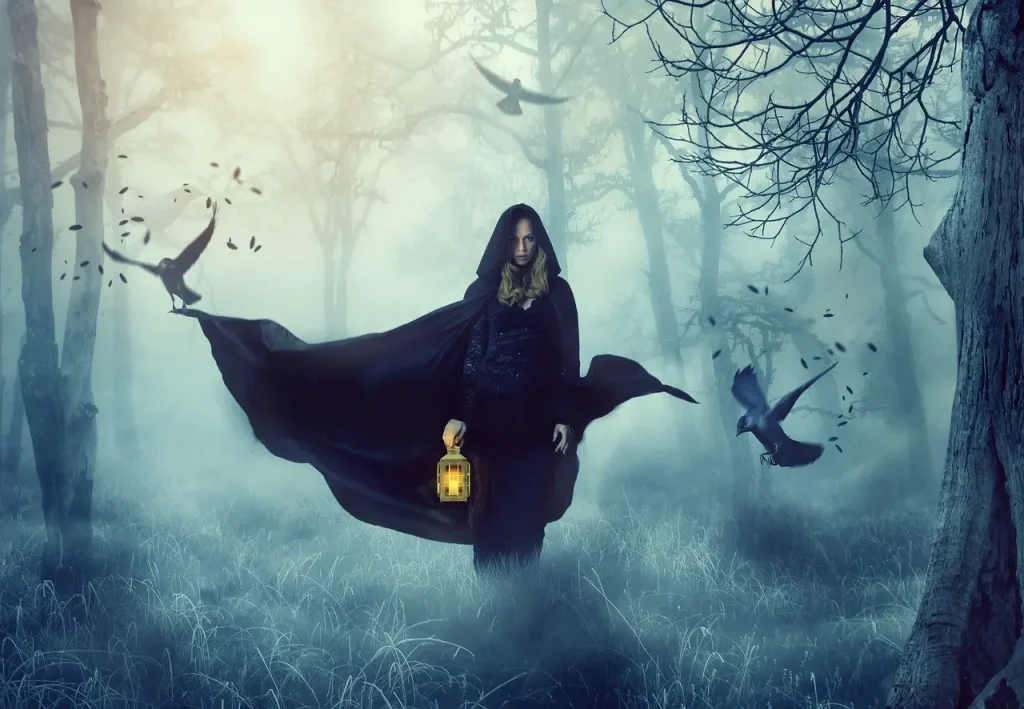
Pingback: Types of Witchcraft, Different Kinds of witches...